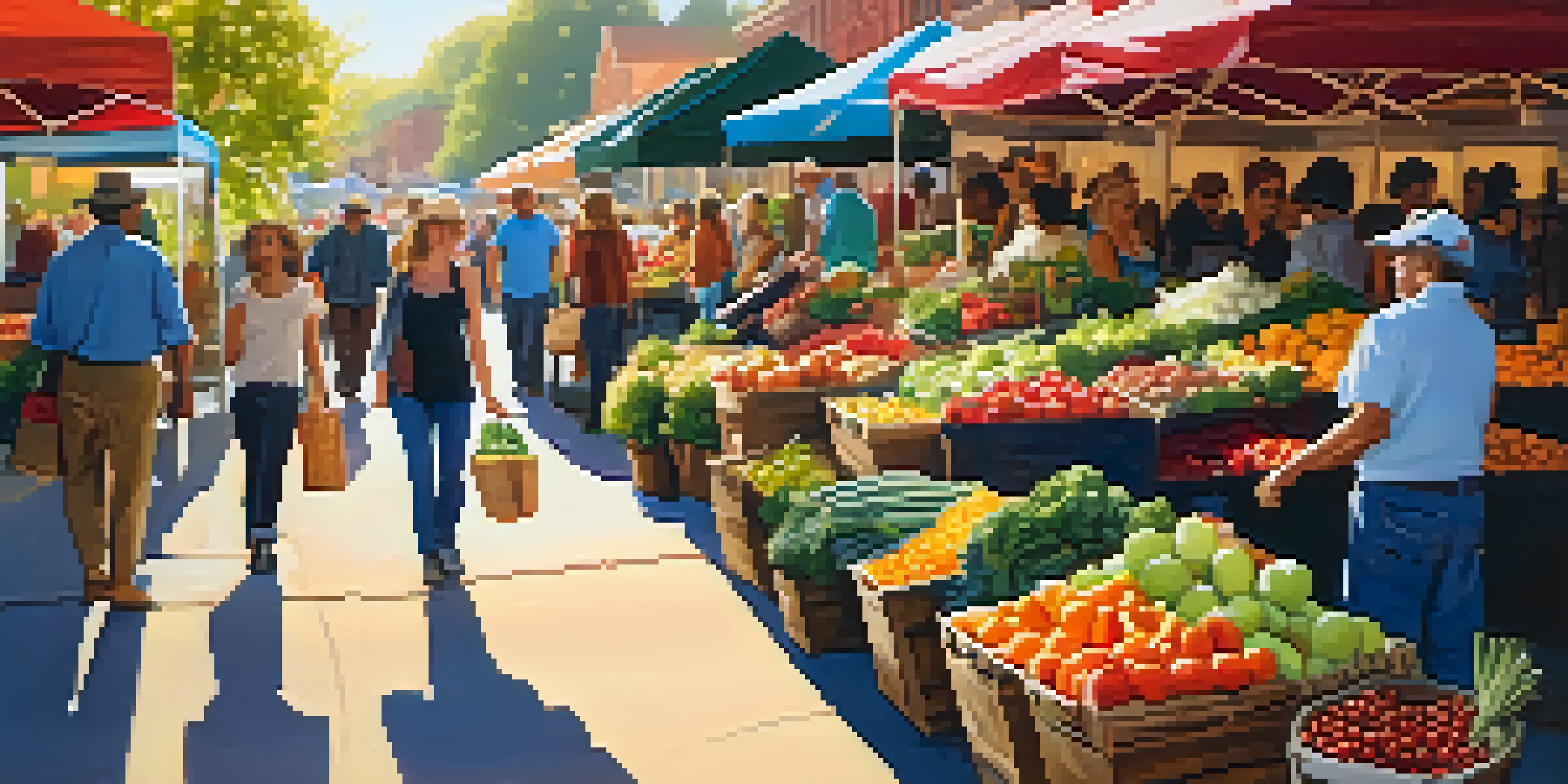Local Food Movements: A Path to Sustainable Tourism Practices

Understanding Local Food Movements and Their Impact
Local food movements emphasize sourcing food from nearby producers, promoting freshness and quality. This approach not only supports local economies but also fosters a connection between consumers and the land. As travelers become more aware of their impact on the environment, these movements offer an appealing alternative to traditional tourism.
Eating local food is not just about taste; it’s about supporting the farmers and the land that produces it.
By prioritizing local ingredients, restaurants and markets can reduce carbon footprints associated with food transport. This leads to more sustainable practices that resonate with eco-conscious tourists. Additionally, local food often reflects the unique culture and heritage of a region, enriching the travel experience.
As communities embrace local food initiatives, they create a sense of pride and identity that can attract visitors. Tourists are increasingly seeking authentic experiences, making local food a perfect avenue for exploring the culture of a destination.
Benefits of Integrating Local Food into Tourism
Integrating local food into tourism offers numerous benefits for both visitors and hosts. For tourists, it provides a chance to experience a destination's culture through its culinary offerings. Imagine savoring a dish made with freshly harvested ingredients from a nearby farm; it’s a taste of place that you can’t replicate elsewhere.

For local businesses, this integration boosts economic activity and fosters community relationships. When tourists choose to eat at local restaurants or shop at farmers' markets, they invest directly in the community. This not only strengthens the local economy but also encourages sustainable practices among food producers.
Local Food Boosts Tourism Appeal
Sourcing food locally enhances authentic travel experiences while supporting regional economies.
Moreover, local food experiences often lead to memorable stories that travelers share with friends and family. These narratives can further promote a destination, creating a cycle of interest and engagement that benefits everyone involved.
Showcasing Local Food Through Culinary Tourism
Culinary tourism is a growing trend that allows travelers to explore a region through its food. This can include food tours, cooking classes, and farm-to-table dining experiences. By showcasing local ingredients and traditional recipes, destinations can highlight their unique culinary heritage.
Food is a cultural artifact that can tell us about our past, our community, and our future.
For example, a cooking class in Tuscany can immerse tourists in the art of pasta making using fresh, local produce. Such experiences not only educate travelers about the culture but also create lasting memories tied to the flavors of the region. This hands-on approach fosters a deeper appreciation for local food systems.
Furthermore, culinary tourism can drive demand for local products, encouraging sustainability and responsible sourcing. As tourists become more conscious of their choices, they often seek out establishments that prioritize local ingredients, creating a ripple effect in the community.
Supporting Local Farmers and Artisans
Local food movements present an ideal opportunity to support farmers and artisans directly. By prioritizing local sourcing, tourists can ensure that their spending directly benefits the people who grow and produce their food. This connection enhances the overall travel experience.
Farmers' markets are perfect examples of how tourism can intersect with local food systems. Tourists visiting these markets not only purchase fresh produce but also interact with the people behind the products. This fosters a sense of community and appreciation for local agriculture.
Culinary Tourism Educates Travelers
Engaging in culinary tourism allows tourists to learn about local food systems and cultural heritage.
Moreover, supporting local producers helps preserve traditional farming practices and biodiversity. As travelers seek out these experiences, they contribute to a sustainable model that values local knowledge and environmental stewardship.
Promoting Sustainable Practices Through Education
Education plays a crucial role in promoting sustainable food practices within tourism. By informing travelers about the benefits of local sourcing, destinations can inspire them to make more conscious choices. Workshops, tastings, and guided tours can serve as platforms for sharing knowledge.
For instance, a vineyard tour might include discussions about organic farming methods and the importance of preserving local ecosystems. These educational experiences not only enhance visitors' understanding but also encourage them to advocate for sustainability in their own communities.
As tourists become more informed about their food choices, they are likely to seek out and support businesses that align with their values. This shift in consumer behavior can drive broader change within the tourism industry, pushing for more sustainable practices overall.
The Role of Technology in Local Food Movements
Technology has become an indispensable tool for promoting local food movements. Apps and websites that connect consumers with nearby farms and producers make it easier than ever to find fresh, local options. This accessibility encourages tourists to make informed choices about where they eat.
Social media also plays a significant role in showcasing local food experiences. Travelers often share their culinary adventures online, highlighting unique dishes and local eateries. This organic marketing can attract more visitors interested in authentic dining experiences.
Technology Enhances Local Food Access
Digital tools connect consumers with local producers, making it easier for tourists to choose sustainable dining options.
Additionally, technology allows for better transparency in food sourcing. Tourists can learn about the origins of their meals, fostering a deeper connection to the food they consume. As technology continues to evolve, so too will the ways in which local food movements engage with travelers.
Challenges and Solutions for Local Food Movements
While local food movements offer numerous benefits, they also face challenges. Issues such as seasonality, supply chain limitations, and pricing can make it difficult for local producers to compete with larger, industrial food systems. Addressing these challenges is essential for fostering a sustainable tourism model.
One solution is to create partnerships between local producers and tourism operators. By collaborating, they can develop packages that highlight local food experiences while ensuring fair compensation for farmers. This not only supports the local economy but also creates a more cohesive tourism offering.

Additionally, raising awareness about the importance of supporting local food can shift consumer behavior. As tourists become more educated about the positive impacts of their choices, they are likely to prioritize local options, creating a demand that drives sustainable practices.